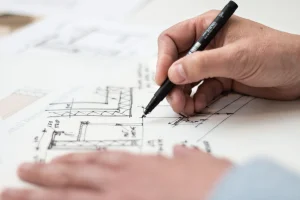There are many benefits to building construction with retaining walls. Most importantly, they provide privacy to homeowners and other occupants. Concrete walls are more common for residential developments, while stone walls are used for commercial buildings. Most new developments now have retaining walls as a standard feature. It is an essential part any building plan that ensures the safety all occupants.
A retaining walls can add many benefits to your home and property. One, it protects your property from possible flooding or heavy rains. A retaining wall can also reduce the noise in your yard. The more noise the louder; the less sound traffic will be able to tolerate in your backyard. The noise from a retaining wall can also increase the value of your home.
You should get price estimates for building a retaining wall around your deck if you plan to create an outdoor living space. A wall around your deck will reduce the amount you have to maintain it. You won’t have the need to paint doors or windows regularly and you won’t have wood to scrape. You can relax and enjoy your outdoor living area without having to do any heavy maintenance.
It is simple to build a wall using simple tools found in most hardware stores. When building a concrete wall, you need to follow the right steps. If you are not comfortable building concrete walls, then you can seek the assistance of professionals. There are many contractors who can help you with your project. Once you’ve decided how to build your retaining wall using the correct tools, the rest is easy.
Retaining walls can be built anywhere there is slope on your land. Most people build these walls on slopes running uphill. You can build retaining walls directly against the slope if you need small ones that only reach the downhill side.
It is important to place retaining walls on a slope at least five feet apart when building them. The wall should be at least three feet thick. For larger retaining walls that go on a sloped surface but that are not sloped toward your home, you can plant beds that will grow to the depth of the wall. So that the roots can reach the earth straightaway, the soil should be flattened.
The plants that are planted will support the soil and weight of the upper retaining wall. To keep soil from weighing down the upper wall, retaining walls should be one foot higher than the actual wall’s top. Planting beds can be used under the retaining walls to help support the wall. The beds will keep the soil in place and provide a solid foundation for your vegetable garden.
Internet can help with any questions you may have about a hillside deck or the cost of constructing a wall. There are many web sites that offer information on landscaping and construction. You can also find price estimates for various types of decks. Online estimates for landscaped decks and retaining walls can also be found.



